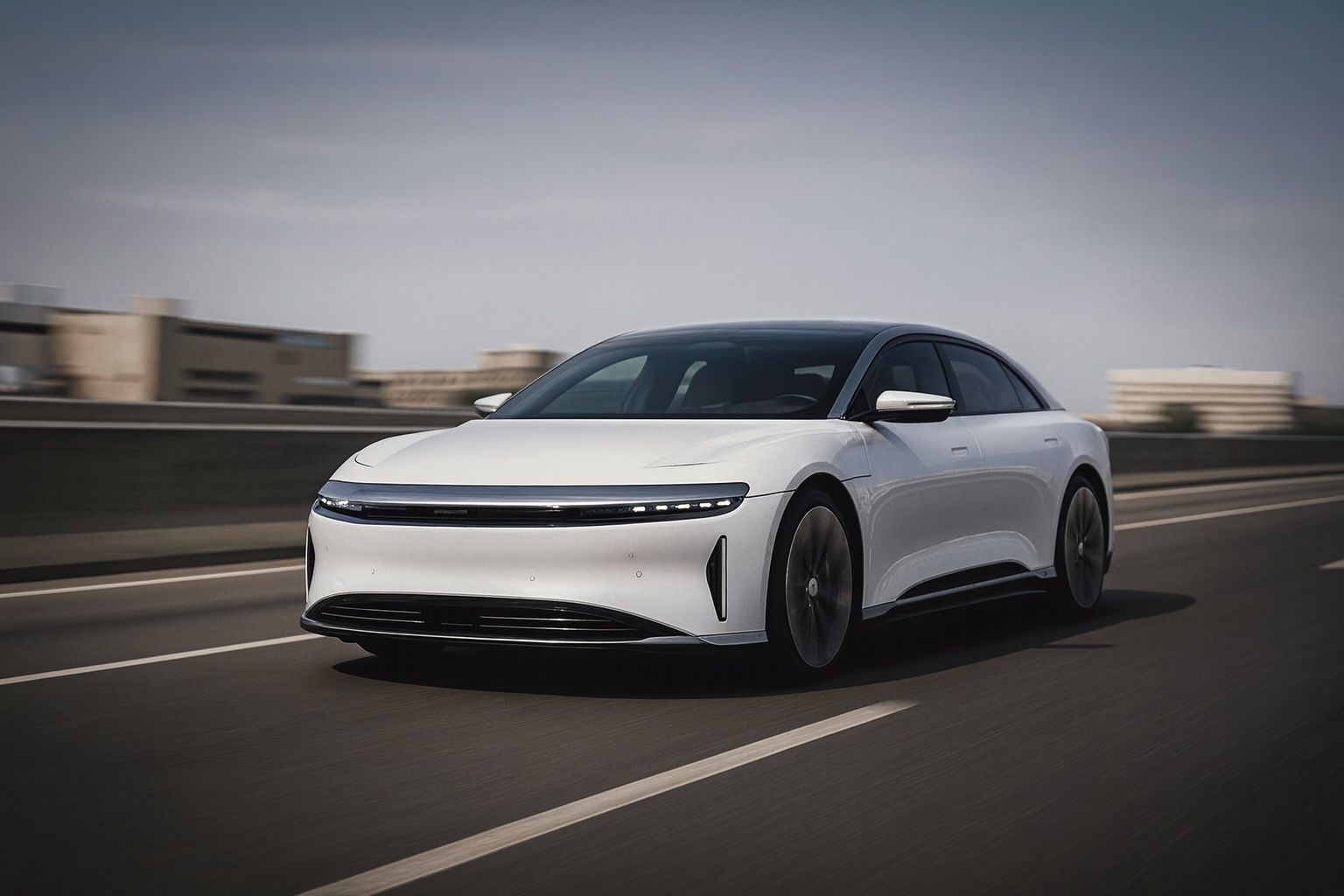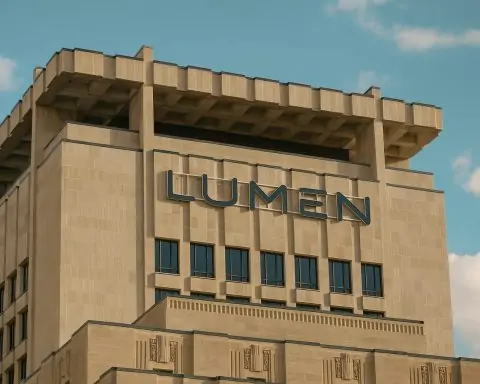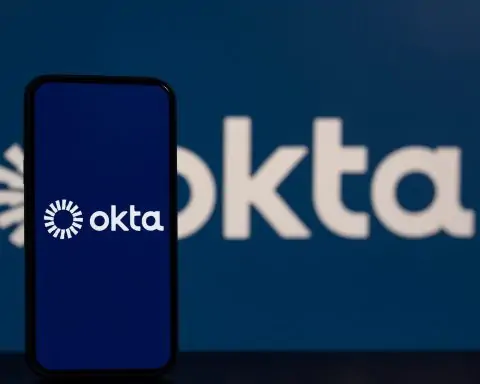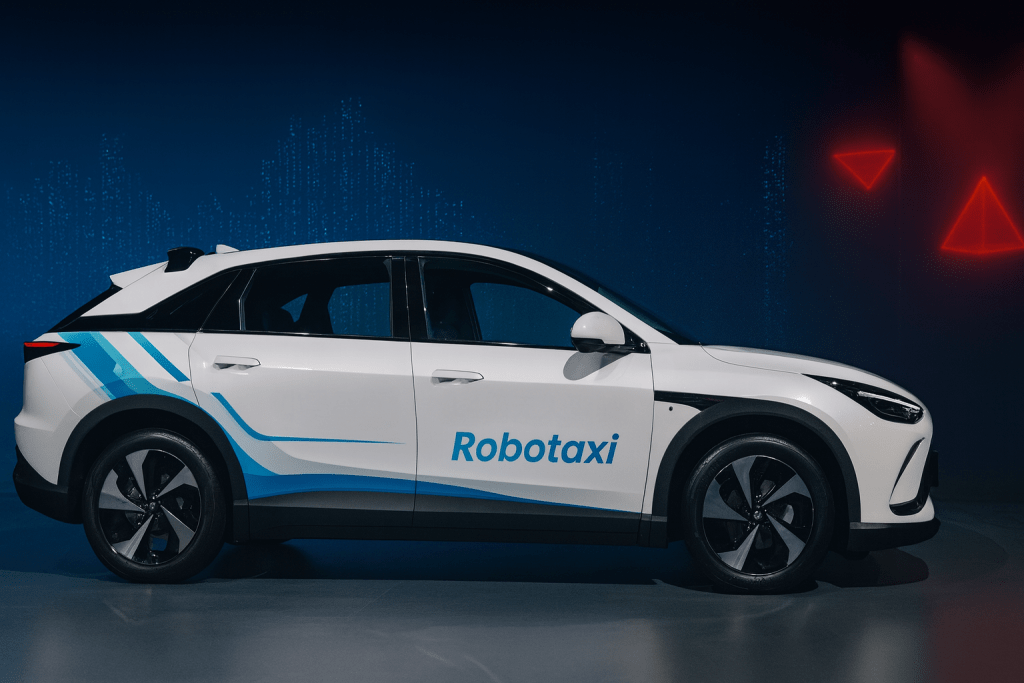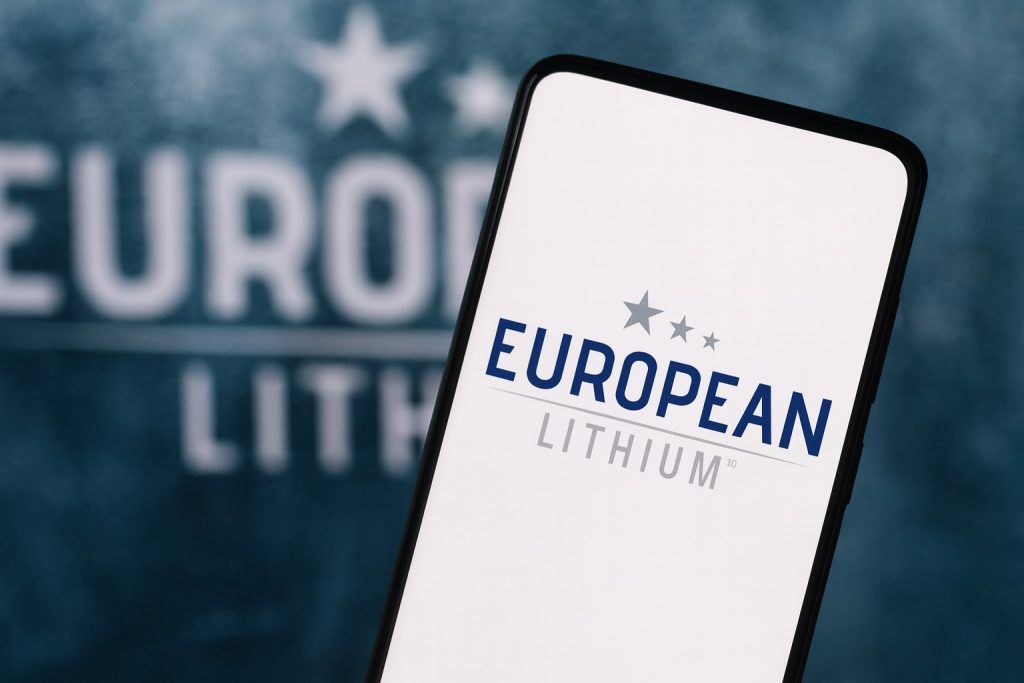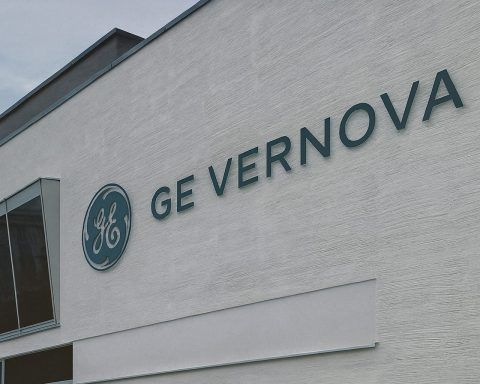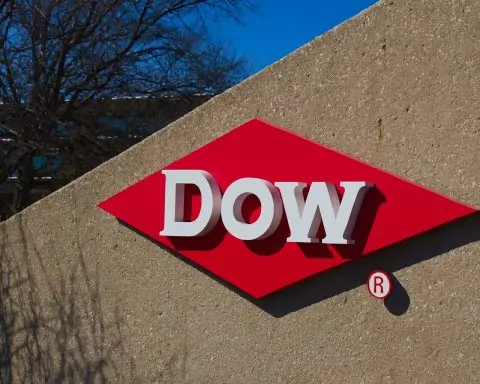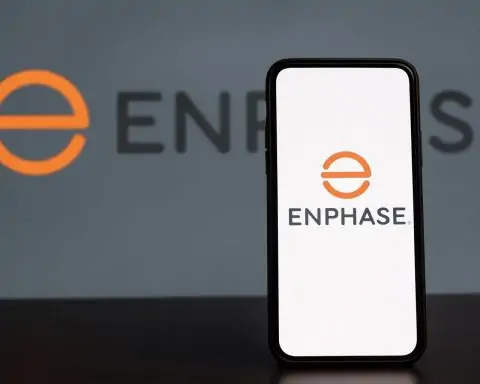Key Facts (As of Oct. 7 2025)
- Record Q3 deliveries: Lucid delivered 4,078 vehicles in Q3 2025, its seventh consecutive quarter of growth, and produced 3,891 vehicles plus more than 1,000 units for final assembly in Saudi Arabia【962950135191294†L63-L119】. This surge was fueled by the new Gravity SUV and a rush to take advantage of a U.S. $7,500 EV tax credit expiring in October [1].
- Guidance cut & market reaction: Lucid narrowed its 2025 production guidance from 20,000 vehicles to 18,000‑20,000, requiring record Q4 output to meet the target [2]. Shares fell around 8% to $22 after the announcement, partly due to a 1-for-10 reverse stock split and concerns about demand post‑tax‑credit expiry [3].
- Saudi-backed expansion: Over 1,000 vehicles built in Arizona were shipped to Lucid’s new Saudi plant for final assembly [4]. The Public Investment Fund (PIF) of Saudi Arabia holds about 58.4% of Lucid following $8 billion in funding [5].
- Robotaxi partnership: Uber invested $300 million and agreed to purchase at least 20,000 Gravity SUVs equipped with Nuro’s Level 4 autonomous technology starting in 2026 [6].
- Upcoming catalysts: Q3 financial results will be released Nov. 5, with analysts expecting a loss of ~$2.29 per share on $380 million of revenue [7]. Lucid plans to launch a mid‑size EV platform around 2026 priced near $50,000 to broaden its market [8].
Recent News and Strategic Updates
Record deliveries driven by Gravity SUV and tax‑credit rush
Lucid’s Q3 2025 delivery update brought some of the most positive headlines the company has seen in months. The luxury EV maker produced 3,891 vehicles in the quarter and delivered 4,078 vehicles, surpassing production for the first time since going public【962950135191294†L63-L119】. An additional 1,000+ vehicles were built in Arizona and shipped to a new facility in Jeddah, Saudi Arabia for final assembly [9]. Management credited the surge to strong demand for the newly launched Gravity SUV and customers rushing to secure the expiring $7,500 U.S. EV tax credit [10].
The Gravity, a seven‑seat luxury SUV, starts around $96,550 and boasts an 828 hp dual‑motor drivetrain with a 450‑mile range. It can add roughly 250 miles of range in ten minutes thanks to fast‑charging technology that Lucid claims competes with Porsche’s 300 kW chargers [11]. The company also clarified that early data showing only nine Gravity registrations was misleading because many vehicles were used as demos or awaiting registration, noting that several hundred had been sold【962950135191294†L63-L119】.
Guidance cut and stock split
Despite record deliveries, Lucid lowered its full‑year production guidance from 20,000 vehicles to 18,000‑20,000 vehicles, citing supply constraints and the expiration of tax credits [12]. Interim CEO Marc Winterhoff said the company added a second manufacturing shift but still faced magnet shortages, implying that hitting even the low end of guidance requires building over 8,000 vehicles in Q4—more than double any previous quarter [13].
Investors reacted negatively to the guidance cut and the 1-for-10 reverse stock split executed in mid‑2025, which reduced the share count but did not improve fundamentals. A research note from CFRA downgraded Lucid to Strong Sell with a $10 price target, warning that deliveries and production were far below expectations and that reverse splits often precede prolonged underperformance [14].
Saudi partnership and capital support
Saudi Arabia’s Public Investment Fund (PIF) remains a critical lifeline. In Q3, more than 1,000 vehicles were shipped to Lucid’s Jeddah plant for final assembly, part of a plan to localize production and satisfy the kingdom’s goal of building EVs domestically [15]. PIF owns roughly 58.4% of Lucid and has invested $8 billion in the company [16]. The government has also committed to purchase up to 100,000 Lucid vehicles over ten years; the first deliveries began in early 2025.
Robotaxi partnership with Uber and Nuro
In July, Uber invested $300 million in Lucid and agreed to buy at least 20,000 Gravity SUVs to operate as robotaxis. Nuro will integrate Level 4 autonomous systems, and a prototype is already testing at Nuro’s proving grounds [17]. The program will begin deploying vehicles in late 2026. The partnership underscores Lucid’s strategy of licensing and supplying its advanced powertrain and battery technology rather than relying solely on retail sales.
Product development and technology milestones
Lucid continues to emphasize technology leadership. During summer 2025, its Air Grand Touring sedan set a Guinness World Record for the longest EV drive without recharging, traveling 1,205 km (approximately 750 miles) from Switzerland to Germany—about 100 miles farther than any previous electric vehicle record [18].
At Lucid’s Q2 earnings call, management highlighted improvements to its DreamDrive Pro driver-assistance suite, including hands‑free driver assist and automatic lane-change features [19]. The company also adopted Tesla’s North American Charging Standard (NACS), giving Lucid owners access to the Supercharger network by 2025 [20].
Looking ahead, Lucid aims to roll out a mid‑size platform around 2026 with models priced near $50,000—including a crossover SUV, a rugged variant and possibly a sedan—to expand beyond the luxury segment [21]. Executives also continue to explore licensing deals for its powertrain to other automakers and stationary storage providers, a potential high-margin revenue stream [22].
Competitive Landscape and Market Context
The global EV market remains fiercely competitive. Tesla delivered 497,099 vehicles in Q3 2025, a 7.4% increase year over year [23]. Tesla’s vehicles still dominate the premium segment, but some analysts note that its Model S and Model X have not undergone significant redesigns for more than a decade, creating an opening for newcomers like Lucid [24]. Tesla is focusing heavily on autonomous driving and robotaxis, which could distract it from refreshing its luxury lineup [25].
Rivian and Ford have also gained traction with electric SUVs and pickups, while GM is pushing vehicles like the Chevrolet Blazer EV. Rivian, which offers vehicles at similar or slightly lower price points than Lucid, continues to ramp production. Analysts caution that Lucid’s absence from the sub-$50k segment—where 70% of U.S. car buyers reside—limits mass-market adoption [26]. Although Lucid plans to address this with a mid-sized platform in 2026, competitors such as Rivian and Tesla will likely offer affordable models sooner [27].
How Lucid compares
- Range & technology: Lucid’s Air sedan and Gravity SUV emphasize industry-leading range and efficiency; the Air’s 1,205 km record shows its battery prowess [28]. Tesla’s Model S long-range variant offers up to 405 miles, and Rivian’s R1S SUV provides around 390 miles.
- Pricing: Lucid’s vehicles start at $96k for the Gravity and $78k for the Air, well above Tesla’s Model Y (around $50k) and Rivian’s R1T/R1S (about $75k). Lucid hopes to introduce $50k vehicles in 2026 [29].
- Production scale: Tesla produces nearly 500k vehicles per quarter, while Lucid delivered just over 10k in the first nine months of 2025 [30]. Scaling remains a major hurdle.
- Capital backing: Lucid benefits from Saudi government support, but this creates geopolitical risk and potential governance issues. Tesla is self-funded through profits, while Rivian relies on capital markets but has backing from Amazon.
Fundamentals and Financial Position
Lucid’s Q2 2025 results (the most recent financials available) show that the company produced 3,863 vehicles, delivered 3,309, and generated $259.4 million in revenue [31]. The GAAP net loss per diluted share was $(0.28), and the company ended the quarter with $4.86 billion of total liquidity [32]. Management updated full‑year production guidance to 18,000‑20,000 vehicles from 20,000 [33].
Investors are watching cash burn closely. Lucid’s high capital expenditure for the Gravity launch and Jeddah plant expansion, combined with modest revenue, means the company will likely require additional funding. While the PIF has been willing to invest, there is no guarantee it will continue to provide unlimited capital, particularly amid volatile oil prices and rising fiscal pressures in Saudi Arabia.
Lucid has attempted to diversify revenue by licensing its powertrain technologies to other manufacturers and stationary storage providers [34]. It already supplies battery packs to Aston Martin, and executives have hinted at additional deals. Such licensing could boost margins since Lucid’s technology is considered among the most energy-efficient.
Stock Performance & Technical Signals
Lucid shares have been highly volatile. After the July announcement of the Uber/Nuro partnership, shares surged more than 25%. However, following the Q3 deliveries report and guidance cut, the stock fell about 8% to the mid‑$20s and remained down approximately 21% year-to-date [35].
Technical analysts note that the 50-day moving average around $22 acts as near-term support, while the 200-day moving average near $30 serves as resistance [36]. The reverse stock split may temporarily prop up the price but could heighten volatility.
Analyst Opinions and Forecasts
- CFRA (Oct. 7 2025) downgraded Lucid to Strong Sell with a $10 price target, citing lower-than-expected Q3 deliveries, the difficulty of meeting revised guidance, and the poor historical performance of companies after reverse stock splits [37].
- TD Cowen (Sept. 4 2025) maintained a Hold rating but trimmed its price target from $23 to $22 [38].
- Some bullish analysts (e.g., Mickey Legg) have argued that Lucid’s advanced technology and licensing opportunities justify valuations up to $70 per share, pointing to the Uber robotaxi deal as validation [39]. Critics counter that such targets ignore the lack of affordable models and competitive threats [40].
- According to the consensus on sites like TipRanks, Wall Street expects a loss of about $2.29 per share in Q3 on $380 million of revenue [41].
Future Outlook
Lucid’s near-term prospects hinge on three factors: scaling production, controlling costs, and maintaining demand as U.S. EV incentives expire. Meeting the low end of its 18k‑20k vehicle production target will require doubling Q4 output relative to past quarters [42], an ambitious feat given supply constraints. Management has added a second manufacturing shift and expects Gravity production to dominate in late 2025, but analysts remain skeptical.
Longer-term, the company’s success will depend on the launch of its mid-size platform in 2026, which aims to attract buyers at the $50k price point [43]. If executed effectively, this could significantly expand Lucid’s addressable market and reduce dependence on the luxury niche. Additionally, the Uber/Nuro robotaxi partnership could generate recurring revenue through fleet sales and software licensing, though commercial deployment of Level 4 autonomy remains uncertain amid regulatory and technological hurdles [44].
The company continues to explore licensing deals, which could provide high-margin revenue without the capital intensity of vehicle production [45]. Investors should monitor announcements of new partners, particularly in the energy-storage sector.
Risks and Investor Sentiment
Lucid faces several risks:
- Demand cliff after tax credit expiration: The $7,500 federal EV tax credit that boosted Q3 sales has expired, raising concerns that U.S. demand could fall sharply [46].
- High cash burn: Expanding production, launching the Gravity and Jeddah facilities, and investing in autonomy require substantial capital. While the PIF remains supportive, prolonged losses could strain even a sovereign investor.
- Supply chain and tariffs: Magnet shortages, high battery costs, and uncertainty over tariffs or trade policies—especially following political changes—could disrupt production [47].
- Competition: Tesla, Rivian, Ford and others are ramping production and offering lower-priced models. Without a sub-$50k vehicle until 2026, Lucid may struggle to achieve scale [48].
- Execution risk: Bringing the mid-size platform to market and delivering on the robotaxi partnership require flawless execution in engineering, manufacturing and regulatory compliance.
- Shareholder dilution and volatility: The reverse stock split and potential future capital raises could dilute shareholders. Moreover, options activity around a low-float stock can amplify price swings.
Conclusion
Lucid Group enters the final quarter of 2025 with record deliveries and a high-profile robotaxi partnership but also with significant uncertainties. The Gravity SUV has energized sales, and the company’s battery technology continues to impress, evidenced by world-record efficiency and strategic deals. However, the expiration of U.S. EV tax credits, scaled-back production guidance, and mounting losses have tempered investor enthusiasm. Analysts are sharply divided—some see a technology licensing powerhouse, while others warn that high prices and competition could relegate Lucid to a niche player.
For investors considering LCID, the stock represents a high-reward but high-risk bet on long-range EV technology and autonomous fleets. Upcoming catalysts—November’s earnings release, progress on the mid-size platform, and details of the Uber robotaxi rollout—will likely determine whether Lucid’s Gravity-fueled momentum can overcome the gravitational pull of financial reality.
References
1. www.reuters.com, 2. www.reuters.com, 3. www.benzinga.com, 4. www.agbi.com, 5. www.agbi.com, 6. www.reuters.com, 7. www.benzinga.com, 8. electrek.co, 9. www.agbi.com, 10. www.reuters.com, 11. ts2.tech, 12. www.reuters.com, 13. www.benzinga.com, 14. www.fidelity.com, 15. www.agbi.com, 16. www.agbi.com, 17. www.reuters.com, 18. ts2.tech, 19. media.lucidmotors.com, 20. media.lucidmotors.com, 21. electrek.co, 22. www.ainvest.com, 23. www.agbi.com, 24. www.fool.com, 25. www.fool.com, 26. www.nasdaq.com, 27. www.nasdaq.com, 28. ts2.tech, 29. electrek.co, 30. www.agbi.com, 31. media.lucidmotors.com, 32. media.lucidmotors.com, 33. media.lucidmotors.com, 34. www.ainvest.com, 35. www.agbi.com, 36. www.benzinga.com, 37. www.fidelity.com, 38. news.futunn.com, 39. www.nasdaq.com, 40. www.nasdaq.com, 41. www.benzinga.com, 42. www.benzinga.com, 43. electrek.co, 44. www.reuters.com, 45. www.ainvest.com, 46. www.reuters.com, 47. www.benzinga.com, 48. www.nasdaq.com
